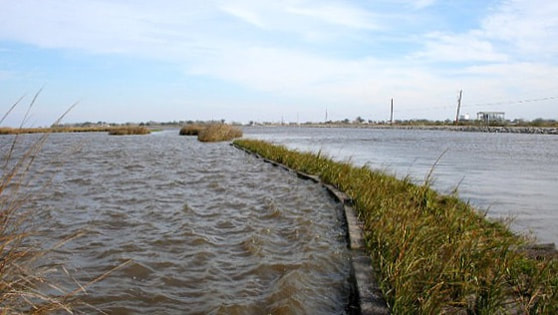Rumored Buzz on Shore Protect Team
Wiki Article
Get This Report on Shore Protect Team
Table of ContentsLittle Known Questions About Shore Protect Team.Getting The Shore Protect Team To WorkShore Protect Team Fundamentals ExplainedHow Shore Protect Team can Save You Time, Stress, and Money.7 Simple Techniques For Shore Protect Team5 Easy Facts About Shore Protect Team Explained4 Simple Techniques For Shore Protect Team
Decrease in residential or commercial property value: As the location tourist is influenced by erosion, so after that is the economic climate. Purchasers are less likely to browse for a beach house that might be damaged anytime by the upcoming flooding and disintegration emergency situation. In turn, property worth can go down immensely and influence the whole region.Whether a beach is just tiny and congested or has to close totally for the safety and security of the ecosystem and neighboring residential or commercial properties, this greatly influences tourism. In turn, local economic situations are affected (https://www.kickstarter.com/profile/shrprtcttm/about). Threat of injury: The increased risk of flooding and architectural failings causes a raised threat of injury to close-by vacationers and community participants

Shoreline stablizing is directly related to their work. Waterside hotels: Since coastline erosion impacts tourism, it influences the success of waterside hotels.
A Biased View of Shore Protect Team
Coastal industrial organizations: No vacationers means no organization. Coastal state parks: State parks that exist along shorelines are at risk of damages.Soft stabilization is a much far better service for the atmosphere and more sustainable overall. Hard stabilization uses manufactured frameworks as protection to regulate disintegration. Typically, these structures are installed at ideal angles or alongside quit sand motion and minimize the pressure of waves. Most types of tough stablizing like seawalls and sheet steel are not suitable for shoreline stabilization.
A Biased View of Shore Protect Team
There's likewise inadequate evidence of their effectiveness relying on the kind of coastline and regional problems. Difficult stabilization techniques tend to be more difficult to install and don't match the all-natural visual, standing out like a sore thumb and hurting neighborhood environments in numerous situations. Beach nourishment is the procedure of adding shed sand and debris back to coastlines after disintegration has happened.TrapBags aid in the procedure of coastline sustenance by protecting all-natural communities and enabling plants to expand. They're: Eco friendly: You can make use of native soil both to border and to fill the TrapBags.

Shore Protect Team - Truths
They can likewise be set up without any type of hefty equipment. Budget-friendly: TrapBags are ideal for both small and huge areas of coastline.Incorporated with a high construction price, this has resulted in enhancing use of other soft engineering coastal administration alternatives such as beach replenishment. Seawalls are created from different materials, a lot of commonly reinforced concrete, rocks, steel, or gabions. Other feasible building materials include plastic, timber, light weight aluminum, fiberglass composite, and biodegradable sandbags made of jute and coir. The ideal seawall style counts on location-specific aspects, consisting of surrounding erosion procedures. There are three major kinds of seawalls: upright, curved, stepped, and piles (see table below).
All-natural barriers, such as coral reefs and mangrove woodlands, stop the spread of tsunamis and the circulation of coastal waters and mitigated the flood and rise of water. A cost-benefit approach is an effective way to determine whether a seawall is ideal and whether the advantages deserve the expenditure.
10 Easy Facts About Shore Protect Team Explained
A seawall is a static attribute which can contravene the dynamic nature of the coast and restrain the exchange of sediment in between land and sea. The table below sums up some positive and adverse effects of seawalls which can be made use of when contrasting their effectiveness with various other seaside monitoring choices, such as beach nutrients. [] Advantages and drawbacks of seawalls according to Short (1999) Benefits Negative aspects Long-term option in comparison to soft beach sustenance.
This can cause coastlines to dissipate, making them ineffective for coastline goers. Generally, seawalls can be a successful means to regulate seaside disintegration, however only if they are constructed well and out of materials that can stand up to the pressure of ongoing wave power.
A Biased View of Shore Protect Team
Combined with a high building and construction cost, this has actually led to increasing use of other soft engineering coastal administration alternatives such as beach replenishment. Seawalls are built from various products, most typically strengthened concrete, boulders, steel, or gabions. Other feasible building and construction materials include vinyl, wood, aluminum, fiberglass composite, and eco-friendly sandbags made from jute and coir. The appropriate seawall layout relies upon location-specific elements, including surrounding disintegration procedures. There are 3 main kinds of seawalls: upright, rounded, tipped, and piles (see table listed below). A report released by the United Nations Atmosphere Program (UNEP) suggests that the tsunami of 26 December 2004 created less damage in the areas where natural barriers existed, such as mangroves, coral reefs or seaside vegetation.All-natural barriers, such as coral reefs and mangrove forests, protect against the spread of tidal waves and the flow of seaside waters and minimized the flooding and surge of water. A cost-benefit technique is an efficient method to establish whether a seawall is appropriate and whether the benefits deserve the expenditure.
Excitement About Shore Protect Team
A seawall is a static feature which can clash with the dynamic nature of the coast and hamper the exchange of debris in between land and sea. Advantages and negative aspects of seawalls according to Short (1999) Benefits Disadvantages Lengthy term service in contrast to soft coastline nourishment.
This can create beaches to dissipate, making them worthless for coastline goers. Generally, seawalls can be an effective method to manage seaside erosion, yet only if they are created well and out of materials that can endure the pressure of continuous wave power. Some understanding is needed of the seaside processes and morphodynamics specific to the seawall place.
Report this wiki page